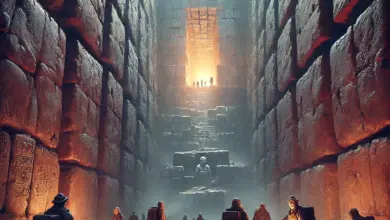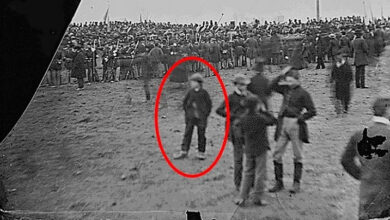The New Discovery In Egypt That Scares Scientists
Egypt continues to captivate with its rich tapestry of history and recent archaeological discoveries. Some years ago, a chilling find was unearthed: 16 human hands, meticulously buried in four eerie pits. At first glance, these hands seemed anomalous—abnormally large and oddly all right hands, with no lefts in sight. This peculiar arrangement hinted at an ancient dark ritual. Egyptian art and historical accounts reveal that warriors once presented the right hands of their vanquished foes as proof of victory, demanding gold in return. Such acts were believed to sever the adversary’s power in the afterlife, ensuring their defeat was final.

In addition to these grim discoveries, Egypt has been the site of extraordinary finds. A remarkable papyrus was recently uncovered, stretching just beyond the height of the world’s smallest skyscraper, located in Wichita Falls, Texas. This papyrus, a relic from around 2,000 years ago, details ancient Egyptian funeral traditions and their visions of the afterlife. Considered one of the most significant texts from ancient Egypt, it remains available in bookstores today. The papyrus was discovered in a chamber south of the Pyramid of Djoser in Saqqara—the oldest pyramid in Egypt, predating the Giza Pyramids.
Excitement surged among archaeologists at Saqqara when they uncovered what may be one of Egypt’s oldest and most complete mummies. Found in a deep shaft, this well-preserved mummy, adorned with gold leaf layers, was identified as that of a wealthy man. His significance was marked by symbols such as a headband, a chest bracelet, and an embalming tunic reserved for Egypt’s elite. The mummy’s resting place, sealed with ancient mortar, was found just as it was left 4,300 years ago.
In a twist of fate, a missing pyramid was rediscovered in 2008. Having deteriorated over 4,000 years, only its base remained visible. This pyramid was a vital site where ancient ceremonies involved high priests carrying mummified sacred bulls. These bulls, believed to be earthly manifestations of the deity of Memphis, were honored for their specific traits, including an all-black coat with a white mark between the horns. After death, they were mummified and interred in underground galleries.
The pyramid’s base was excavated after desert sand had obscured it for years. Initially discovered by a German archaeologist in the 1800s, the site had been partially excavated, but it wasn’t until more recent efforts that the entire base was revealed.
American archaeologists are now working on a cemetery in Egypt that may contain over a million mummified bodies. So far, around 1,700 mummies have been unearthed. Unlike the tombs of kings and pharaohs, these mummies belong to commoners who lived about 1,500 years ago under Roman and Byzantine rule. The cemetery, intriguingly named “The Way of the Water Buffalo,” is a fascinating site for further exploration.

Egyptians’ reverence for animals extends beyond bulls and buffaloes to baboons. In the early 20th century, archaeologists discovered a site in “The Valley of Monkeys,” filled with mummified baboons. These animals, associated with the deity Thoth, were believed to possess wisdom and divine connection. However, the conditions of their captivity—extreme vitamin D deficiencies and poor diet—suggest they were kept indoors, which has led to speculation about Thoth’s displeasure with their caretakers.
Another intriguing discovery involves human mummies with golden tongues. Egyptians, focused on the afterlife, believed these golden tongues would enable the deceased to speak in the next world. Mummies were often interred with goods like necklaces, pottery, golden lotus artifacts, and even some unexpected items like beetles—though not iPhones, as a playful exaggeration suggests.
Recently, a new temple was uncovered in Egypt, believed to be dedicated to Zeus Kasos, a deity combining elements of Zeus and Mount Kasos. Archaeologists found two pink granite columns, likely representing the temple’s front gate, which had collapsed during an earthquake.
In a lighter discovery, scientists found a golden ring south of Cairo depicting Bes, the deity of fun. Often described as a cheerful, chubby dwarf, Bes contrasts with the more serious deities of ancient Egypt. Interestingly, women in ancient Egypt received tattoos as protection during childbirth. Some well-preserved tattoos found on mummies feature simple designs, including images of Bes, underscoring his role as a protector.
Perhaps most astonishingly, ancient Egyptians might have invented an early form of robotics. A wooden statue, housed at the Metropolitan Museum of Art, was found to contain a mechanical operating system. This ancient automaton, named Hor, featured a pulley system that allowed it to raise and lower its hand—a fascinating glimpse into Egypt’s innovative spirit.
As Egypt continues to reveal its secrets, each discovery adds to the rich mosaic of its history. From dark rituals to robotic marvels, the ancient world remains as intriguing as ever.






